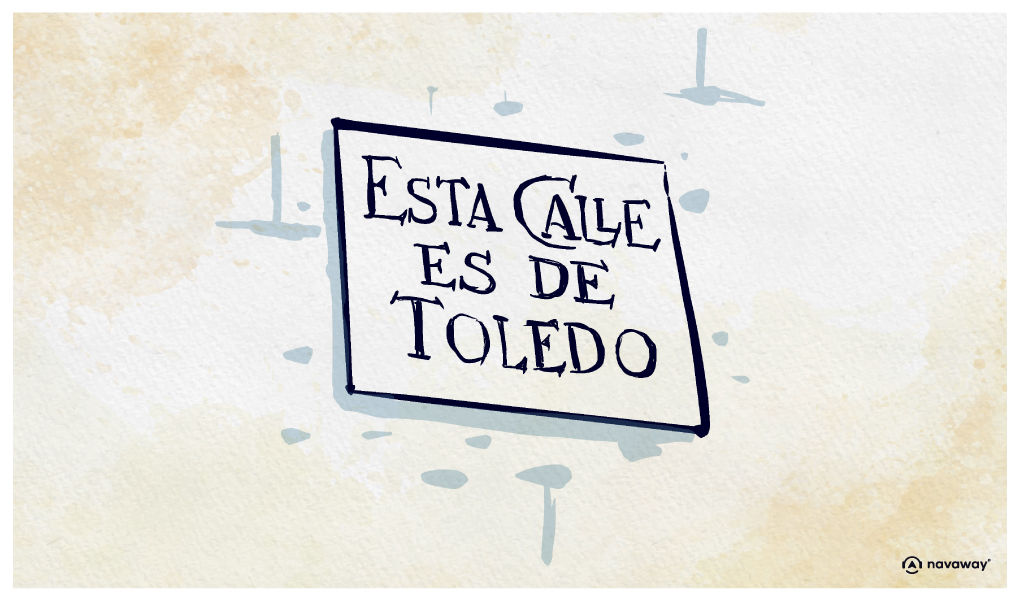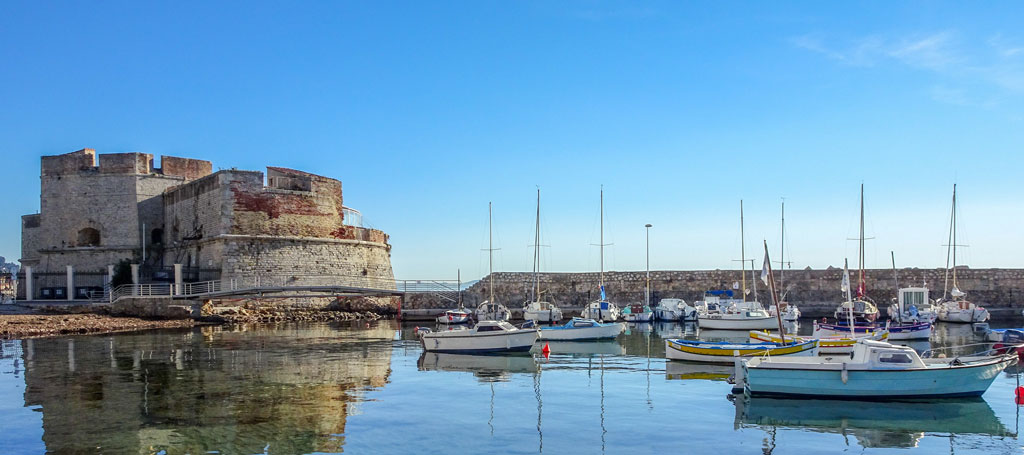
Toledo’s stolen streets and its legends

This point of interest is available as audio on the tour: Visit Toledo, A gem by the Tagus River
Arriving in front of the San Vicente Church, take a moment to notice the small alley on the left. See how it’s blocked by gates? That’s what’s known in Toledo as a calle robada, meaning “stolen street.” As you walk around the city, you might spot small ceramic plaques that read “Esa calle es de Toledo”—“This street belongs to Toledo.” At first glance, that’s pretty obvious as we’re standing in the middle of the city. However, these plaques actually date back to the 16th century, in 1551, when the Spanish capital was moved to Madrid. Consequently, many nobles left Toledo to follow the political power shift, abandoning their large and once-busy residences. Religious orders saw this as an opportunity, as they were usually located on the outskirts of town, and they began purchasing these vacant properties. Soon, Toledo was known as the city of convents, where you’d fine one on nearly each street corner. So far, everything was legal… Until the convents gradually began to expand—acquiring neighbouring homes and, in doing so, taking over public space, which even included entire streets that seperated houses. This practice became quite common the following years, and it’s said that more than 70 streets in Toledo were effectively “stolen” this way. The city council, weakened and partially relocated to Madrid, couldn’t do much about it. So when the municipality did manage to reclaim a public street, they would mark it with a plaque, reading “Esa calle es de Toledo”, to avoid any future confusion. You may also come across other types of plaques across the city—those featuring “leyendas de Toledo”, meaning Toledo’s legends. There are dozens of them, each with a short story written where it supposedly took place. Since we’re near Calle de los Aljibes, here’s one tale: La Dama de los Ojos Apagados—The Lady with the Dull Eyes. The story dates back to the time when Catherine of Austria, Duchess of Savoy, was enjoying her stay in Toledo. She hosted magnificent parties at her city residence, gathering all the local nobility. One night, a nobleman called Don Sancho de Córdoba noticed a stunning young woman in white gliding through the crowd. Oddly, no one else seemed to notice her—only Don Sancho was entranced. He asked her to dance, then suggested a stroll in the gardens. The evening was chilly, and the lady shivered, so Don Sancho, ever the gentleman, offered his cape. As midnight struck, she suddenly said she must leave. She declined his offer to escort her, explaining that her carriage was waiting. She did, however, agree to keep his cape and told him he could retrieve it the next day at the Palace of the Counts of Orsino, on Calle de los Aljibes. As she departed, Don Sancho noticed her skin was cold—colder than the night—and her eyes seemed dull, completely void of light. The next day, he stopped by the Orsino palace to reclaim his cape. The old servant who answered the door said he must be mistaken as no such lady lived there. Just as Don Sancho was about to leave, he noticed a portrait hanging in the hallway. It was her.
He insisted he had spoken to the woman in the painting just last night, but at that moment, the lady of the house descended the stairs, furious. She ordered him to leave at once, saying the woman in the portrait was her daughter—the late Countess of Orsino, who had died many years ago— and that he was being rude to the family. Astounded, Don Sancho finally left. The next morning, someone knocked on his door. It was the same old servant, holding his cape. He handed it over and simply said: “I found it this morning, while changing the flowers on the countess’s grave.”


Discover Toledo with app
An interactive guide through the most beautiful streets, squares, and districts
24 fun audioguides full of historical facts, anecdotes, and legends





Comments